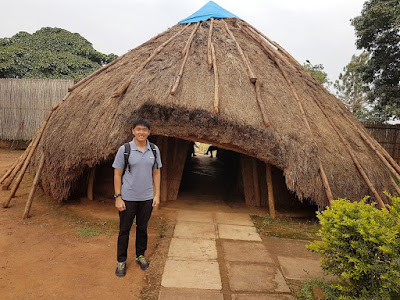JPN: Korokan Ruins Museum
Maizuru Park, Chuo, Fukuoka, Japan
Daily: 9.00am - 5.00pm
Daily: 9.00am - 5.00pm
Korokan was one of the ancient facilities to host foreign diplomats. Located within Maizuru Park that's not far from Akasaka subway station, which shall be the topic of the next post, it was built during the Heian period, the last division of classical Japanese history that lasted from 794 to 1185.
---
JPN: Hotel Sunline Fukuoka Hakata Ekimae
JPN: Nagahama Fish Market Centre
JPN: Korokan Ruins Museum <YOU ARE HERE!>
JPN: Maizuru Park
JPN: Ohori Park
JPN: Kushida Shrine
JPN: Tocho-ji & Shofuku-ji
JPN: Fukuoka Downtown
JPN: Fukuoka Uptown
JPN: Yufuin No Mori 3
JPN: Tenku Yubo Seikaiso
JPN: Seven Hells of Beppu (Part 1)
JPN: Seven Hells of Beppu (Part 2)
JPN: Beppu Downtown
JPN: Yufuin Kotobuki Hananosho
JPN: Yunotsubo Street
JPN: Kinrin Lake
JPN: Yufuin Downtown
JPN: Hotel Route-Inn Kumamoto Ekimae
JPN: Kumamoto Castle
JPN: Kumamon Square
JPN: Kumamoto Downtown
JPN: Tsubame 322 & Huis Ten Bosch 11
JPN: Hotel Okura JR Huis Ten Bosch
JPN: Town of Sasebo
JPN: Mameshiba Café
JPN: Huis Ten Bosch (Part 1)
JPN: Huis Ten Bosch (Part 2)
JPN: Nagahama Fish Market Centre
JPN: Korokan Ruins Museum <YOU ARE HERE!>
JPN: Maizuru Park
JPN: Ohori Park
JPN: Kushida Shrine
JPN: Tocho-ji & Shofuku-ji
JPN: Fukuoka Downtown
JPN: Fukuoka Uptown
JPN: Yufuin No Mori 3
JPN: Tenku Yubo Seikaiso
JPN: Seven Hells of Beppu (Part 1)
JPN: Seven Hells of Beppu (Part 2)
JPN: Beppu Downtown
JPN: Yufuin Kotobuki Hananosho
JPN: Yunotsubo Street
JPN: Kinrin Lake
JPN: Yufuin Downtown
JPN: Hotel Route-Inn Kumamoto Ekimae
JPN: Kumamoto Castle
JPN: Kumamon Square
JPN: Kumamoto Downtown
JPN: Tsubame 322 & Huis Ten Bosch 11
JPN: Hotel Okura JR Huis Ten Bosch
JPN: Town of Sasebo
JPN: Mameshiba Café
JPN: Huis Ten Bosch (Part 1)
JPN: Huis Ten Bosch (Part 2)
---
Korokan was discovered during an excavation that took place in 1987 before the expansion of the nearby baseball stadium took place.
Entrance to the museum is free of charge. You'll be asked by a staff member to sign in the guest book before entering.




In addition, the museum showcases artifacts excavated from the site



 |
| Korokan was once called Tsukushi No Murotsumi. |
A partial reconstruction of the facility can be seen inside the museum.


 |
| It used to be the accommodation section where the foreign diplomats rested in. |
Take a closer look at one part of the excavations in full glory.
 |
| If you can see from the photo, there's a TV screen. There's also a projector screen (not shown). Take note that photography and recordings of the videos shown are not permitted. |



 |
| Not all exhibits are accompanied by explanations in English. |

 |
| Would you like to rest your head on that fanciful porcelain pillow? |

 |
| A large number of discarded porcelain were found in the garbage dump of the facility. |
The Japanese also carried out overseas missions. Between 607 and 838, Japan sent missionaries to Tang Dynasty to learn from the Chinese culture and civilisation.
There's a panel board showing the ingredients used in hosting a banquet for the foreign diplomats during that time.
Here are three other photos that I took before leaving the museum to take a walk at the park.
 |
| The excavation was headed by Dr. Heijiro Nakayama. |
Besides Korokan, there are three others of such facilities to host foreign diplomats built during the Heian period: Chikushi in Fukuoka, Heiankyo in Kyoto and Namba in Osaka.













Comments
Post a Comment